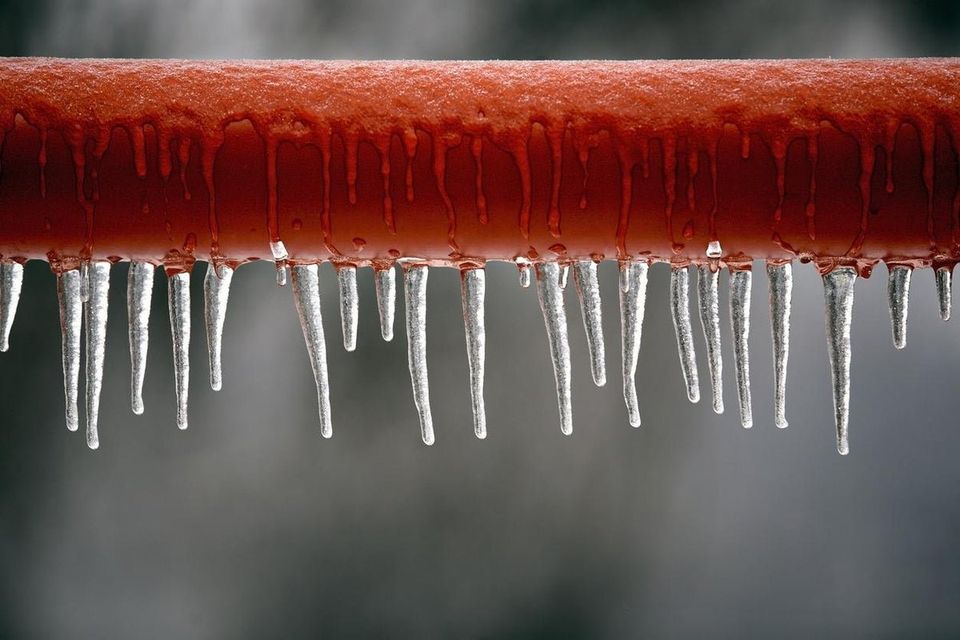Avoid Frozen Plumbing in Cold Weather: Pro Strategies
Avoid Frozen Plumbing in Cold Weather: Pro Strategies
Blog Article
What're your thoughts and feelings about Preventing and dealing with frozen pipes?

Cold weather can damage your plumbing, specifically by freezing pipelines. Below's how to avoid it from taking place and what to do if it does.
Introduction
As temperature levels decline, the danger of icy pipes increases, possibly resulting in pricey repair services and water damages. Recognizing exactly how to stop icy pipes is essential for home owners in cold environments.
Understanding Frozen Pipelines
What creates pipes to ice up?
Pipelines ice up when subjected to temperatures listed below 32 ° F (0 ° C) for prolonged durations. As water inside the pipelines freezes, it expands, putting pressure on the pipe wall surfaces and possibly triggering them to break.
Risks and problems
Frozen pipelines can bring about water disturbances, residential property damages, and costly fixings. Ruptured pipes can flood homes and cause comprehensive structural damage.
Indications of Frozen Water Lines
Determining frozen pipes early can avoid them from rupturing.
Exactly how to determine frozen pipelines
Try to find lowered water flow from taps, unusual odors or noises from pipes, and noticeable frost on exposed pipelines.
Avoidance Tips
Protecting vulnerable pipes
Cover pipes in insulation sleeves or use heat tape to protect them from freezing temperature levels. Focus on pipes in unheated or external locations of the home.
Home heating methods
Keep indoor rooms sufficiently warmed, particularly locations with pipes. Open up cupboard doors to enable warm air to flow around pipes under sinks.
Securing Exterior Plumbing
Garden hoses and outside faucets
Disconnect and drain yard tubes prior to winter months. Set up frost-proof spigots or cover outdoor faucets with shielded caps.
What to Do If Your Pipelines Freeze
Immediate activities to take
If you think frozen pipelines, keep taps open to alleviate pressure as the ice melts. Utilize a hairdryer or towels taken in warm water to thaw pipes slowly.
Long-Term Solutions
Architectural adjustments
Consider rerouting pipelines away from exterior wall surfaces or unheated areas. Include added insulation to attic rooms, cellars, and crawl spaces.
Updating insulation
Purchase top quality insulation for pipes, attics, and wall surfaces. Appropriate insulation assists maintain consistent temperatures and decreases the threat of icy pipelines.
Final thought
Preventing frozen pipes requires aggressive procedures and quick feedbacks. By recognizing the causes, indications, and preventive measures, house owners can shield their pipes during cold weather.
6 Proven Ways to Prevent Frozen Pipes and Protect Your Home
Disconnect and Drain Garden Hoses
Before winter arrives, start by disconnecting your garden hoses and draining any remaining water. Close the shut-off valves that supply outdoor hose bibs and leave the outdoor faucet open to allow any residual water to drain. For extra protection, consider using faucet covers throughout the colder months. It’s also important to drain water from any sprinkler supply lines following the manufacturer’s directions.
Insulate Exposed Pipes
Insulating your pipes is an effective way to prevent freezing. Pipe insulation is readily available at home improvement stores and is relatively inexpensive. Pay close attention to pipes in unheated areas such as the attic, basement, crawl spaces, or garage. Apply foam insulation generously to create a buffer against the cold. You can also wrap your pipes in heat tape or thermostat-controlled heat cables for added warmth.
Seal Air Leaks
Inspect your home for any cracks or openings that could let in cold air. Seal any holes around the piping in interior or exterior walls, as well as the sill plates where your home rests on its foundation. Additionally, make sure to keep your garage door closed unless you’re entering or exiting. Leaving it open creates a significant air leak that can lead to frozen pipes.
Allow Warm Air Circulation
During cold snaps, it’s essential to allow warm air to circulate evenly throughout your home. Leave interior doors ajar to promote better airflow. Open kitchen and bathroom cabinets to help distribute heat consistently around the rooms. If you have small children or pets, be sure to remove any household chemicals or potentially harmful cleaners from open cabinets for safety.
Let Faucets Drip
A small trickle of water can make a big difference in preventing ice formation inside your pipes. When temperatures drop significantly, start a drip of water from all faucets served by exposed pipes. This continuous flow helps prevent the water from freezing. Additionally, running a few faucets slightly can relieve pressure inside the pipes, reducing the chances of a rupture if the water inside does freeze.
https://choateshvac.com/6-proven-ways-to-prevent-frozen-pipes-and-protect-your-home/

As an enthusiastic person who reads on Prevent Frozen Pipes , I imagined sharing that piece of content was essential. Make sure you take the time to promote this post if you enjoyed it. Bless you for your time. Come back soon.
Get Quote Now Report this page